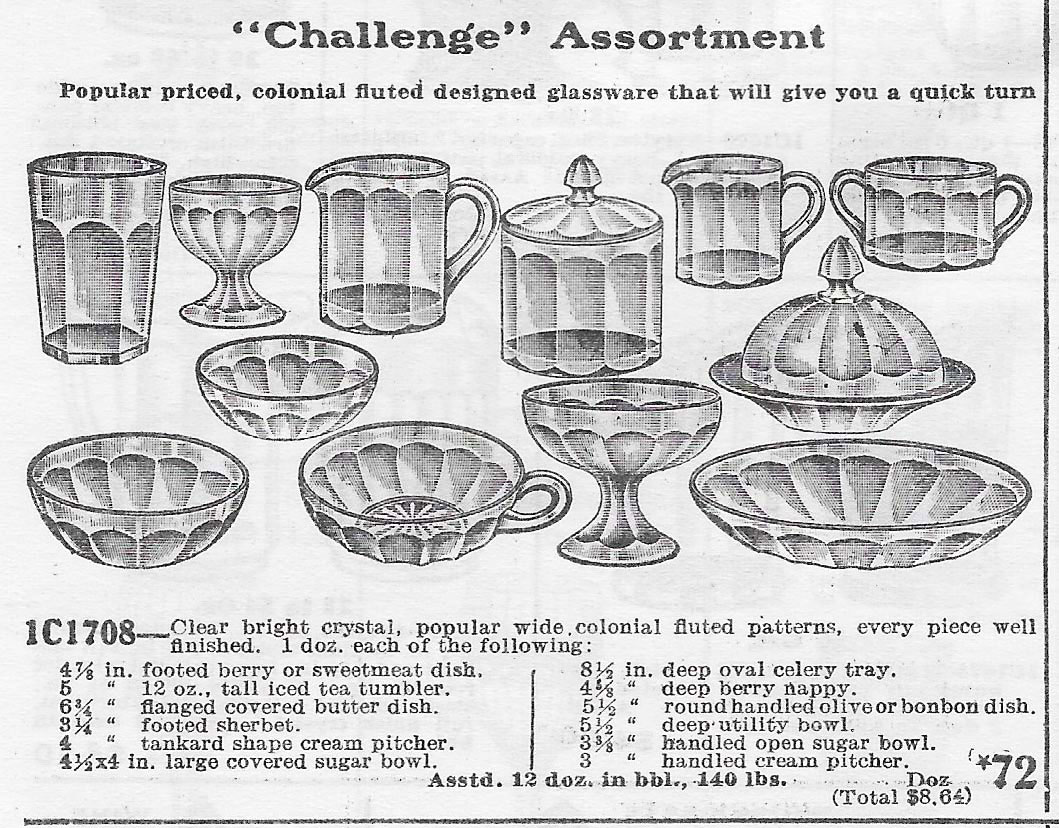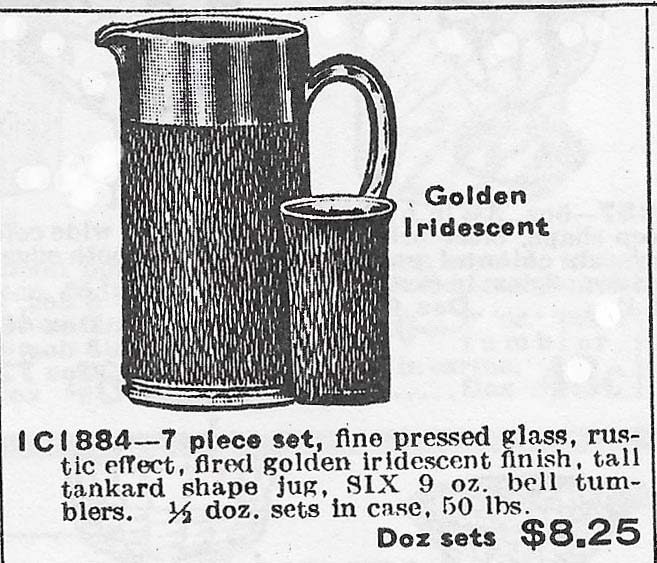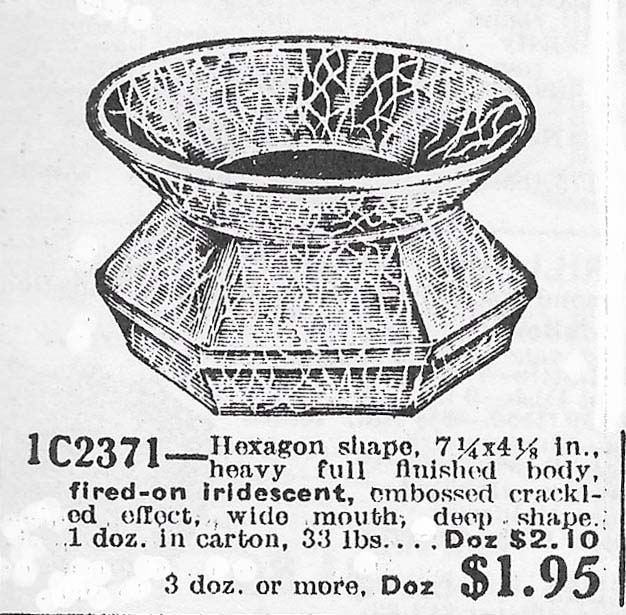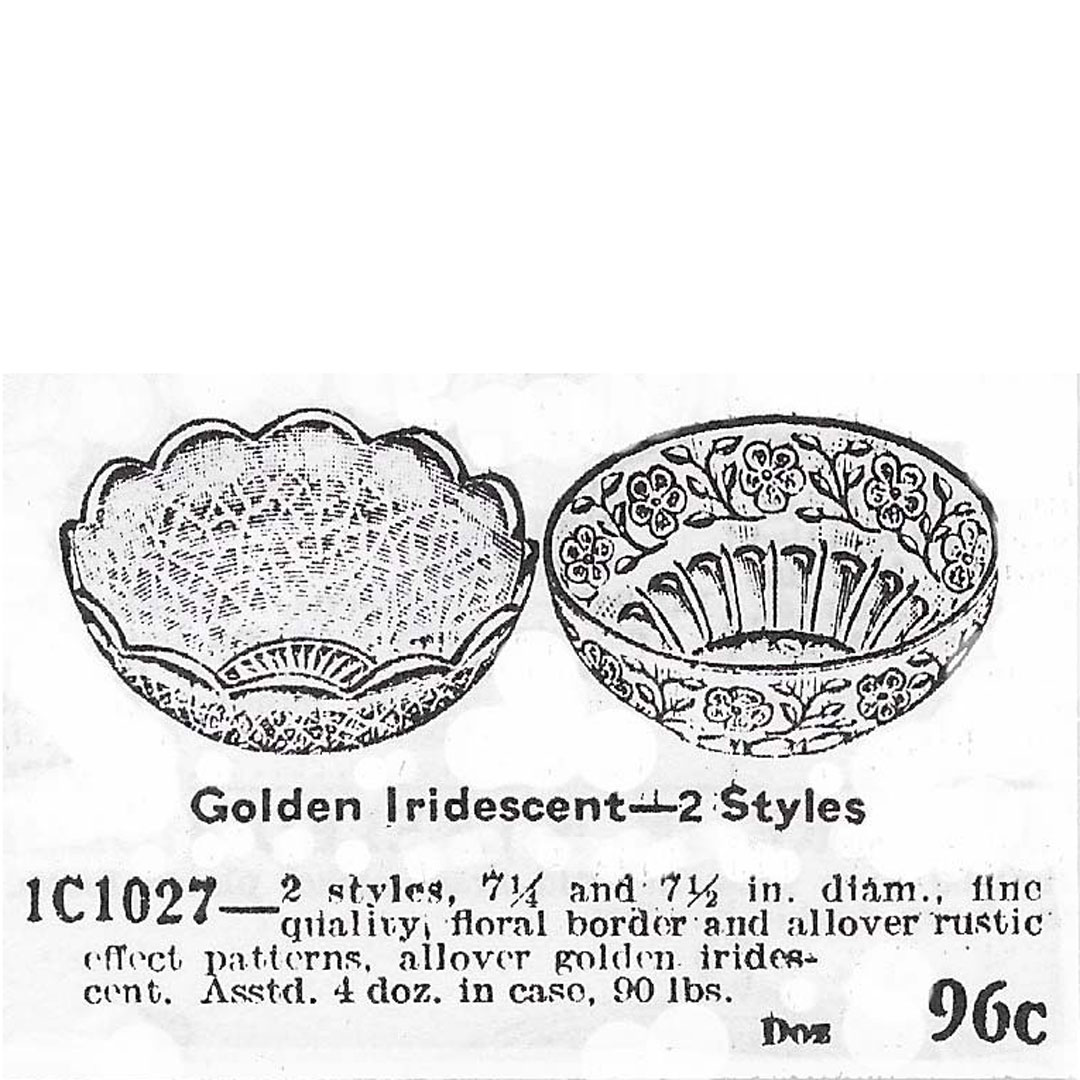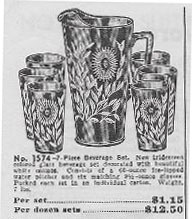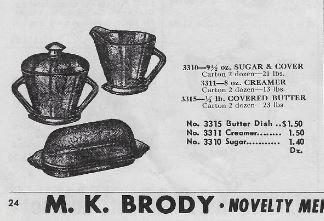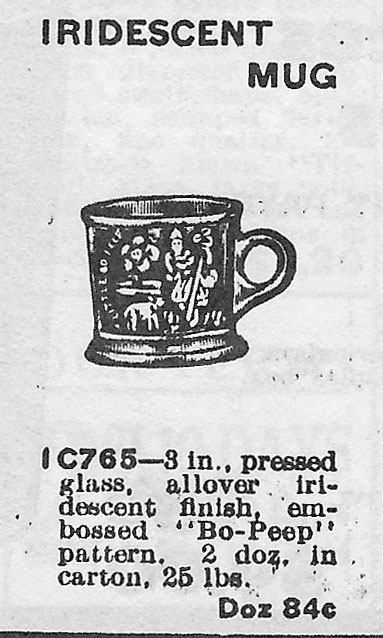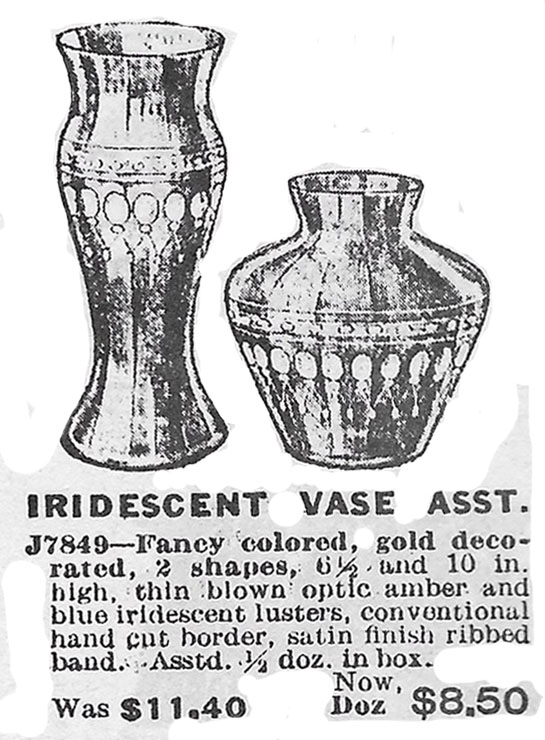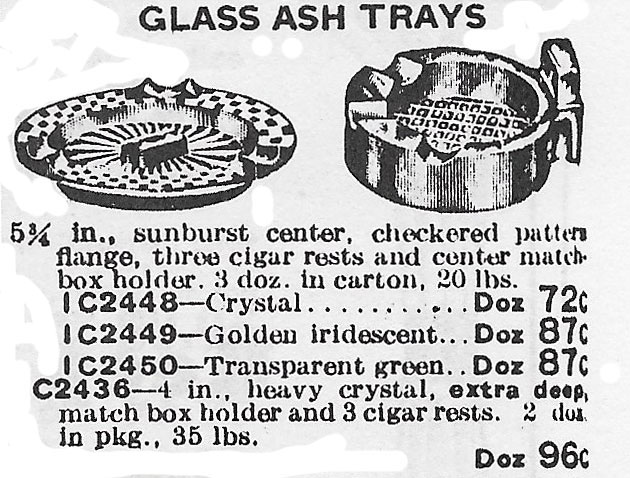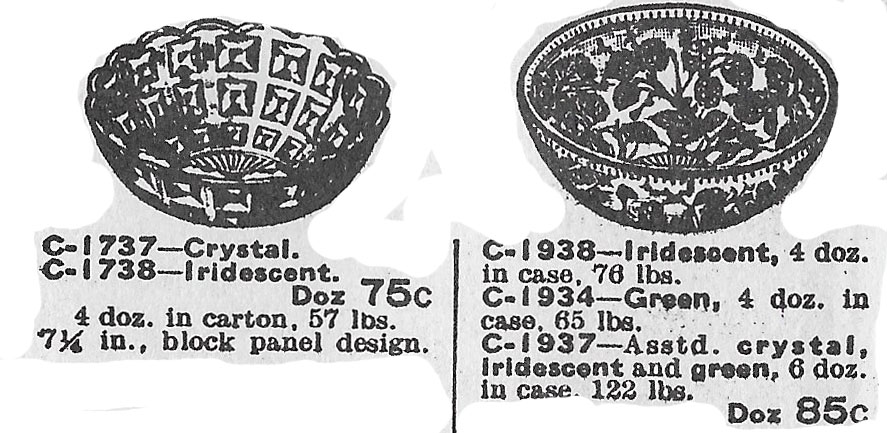Classic era carnival glass was highly manual with hand pressed molds. With the industrial revolution and the desire to cut operating costs, glass manufacturers turned to machinery to produce their glass products. While this type of carnival glass was begun before the Depression started in 1929 and
The Contemporary carnival glass era is said to have begun in the 1960s. A collecting craze of older carnival glass encouraged glass manufacturers to initiate production of iridized glassware and hand pressed molds were once again used.

Animal Powder Jars - Several versions of these powder jars are known. In addition to the Scottie and Bambi above, are the Poodle and the rare Elephant.
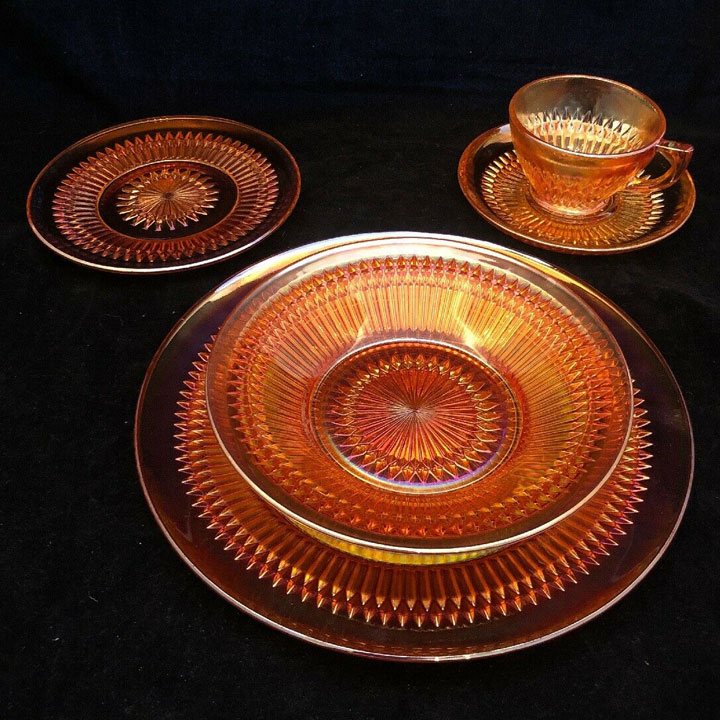
Anniversary, Jeannette - Available in various bowls and plates, cups and suacers, creamers and covered sugars. If you bought a box of soap powder, you got a piece inside.
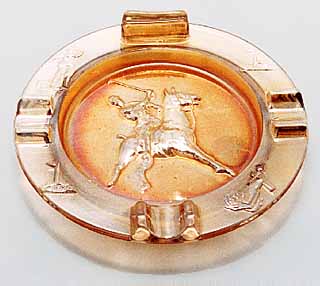
Ashtrays - Follow this link to view several ashtrays made during the depression era.
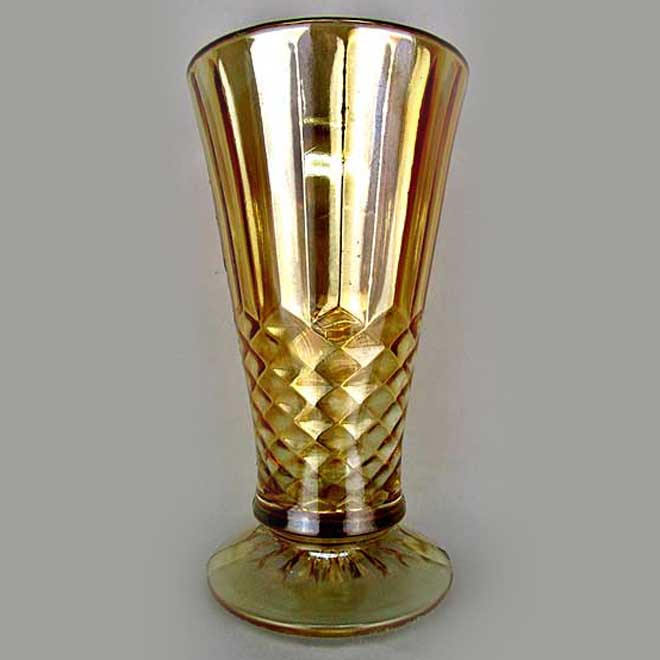
Aunt Polly, US Glass - (late 1920s) The pattern is found a quite a few shapes, but not many are iridized. Found in this marigold 6 1/2-inch vase, a sherbert and underplate and a two handled stemmed bonbon.
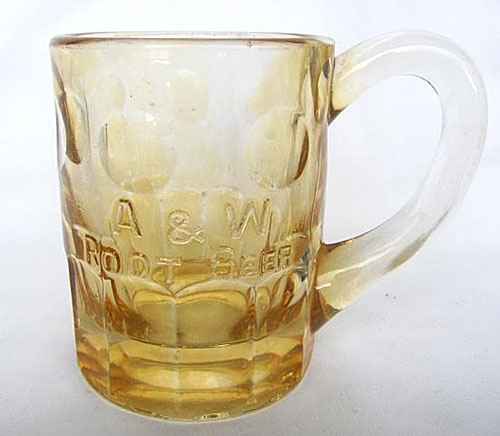
A&W Rootbeer Mug -

Basketweave Tub, Westmoreland - This piece is sometimes described as a tub, but it certainly could be used as a vase. Only seen in marigold.
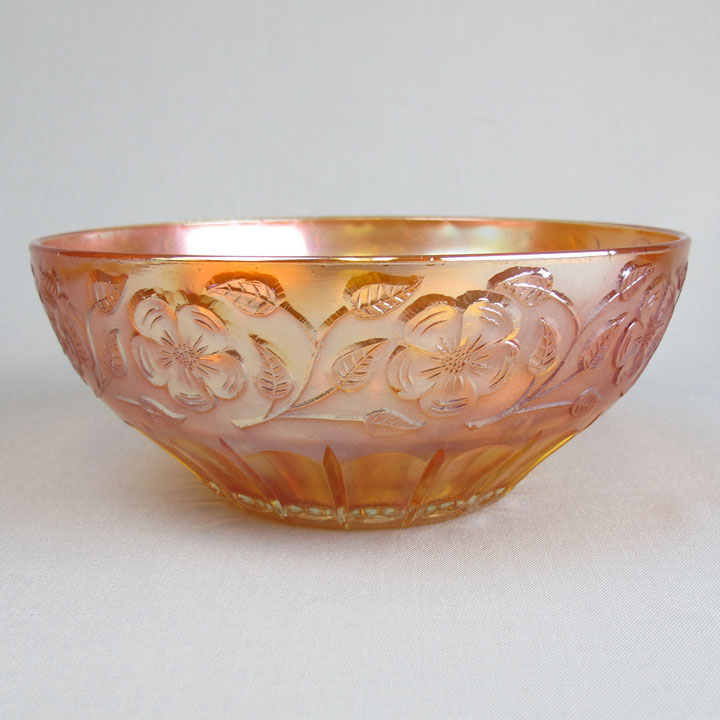
Blossom, Jenkins - Blossom bowl by Jenkins is about 8 inches across. Only seen in marigold.
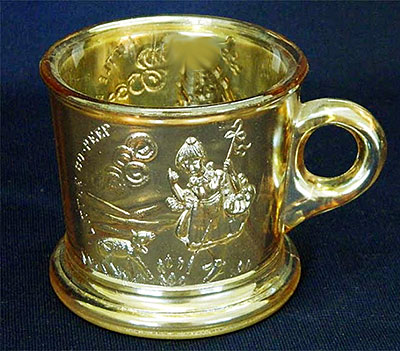
Bo Peep - Based on the nursery rhyme, the pattern has an image of a little girl and a lamb. Bowls have the alphabet and numbers around the edge but mostly seen in mugs. Only found in marigold.

Checkers - Found in several shapes including a butterdish, an ashtray and this rosebowl.
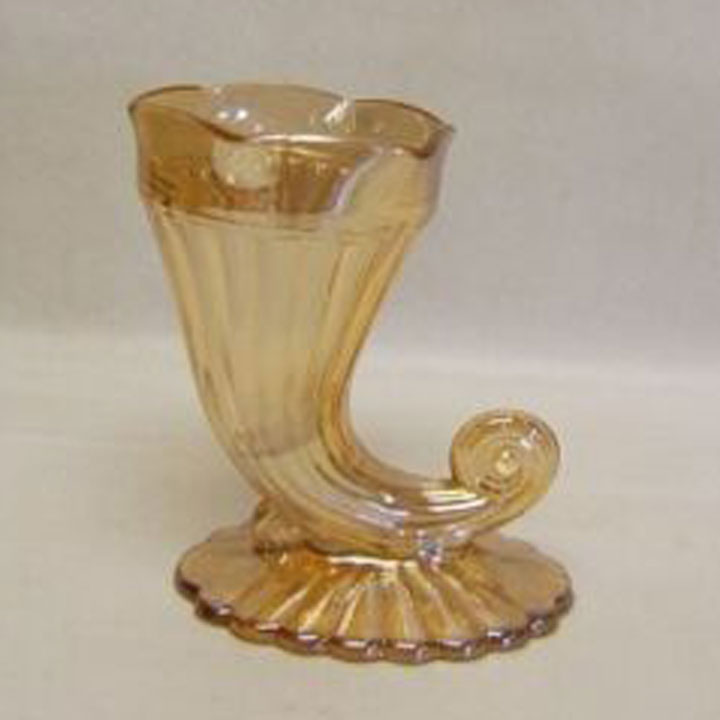
Cornucopia Vase -
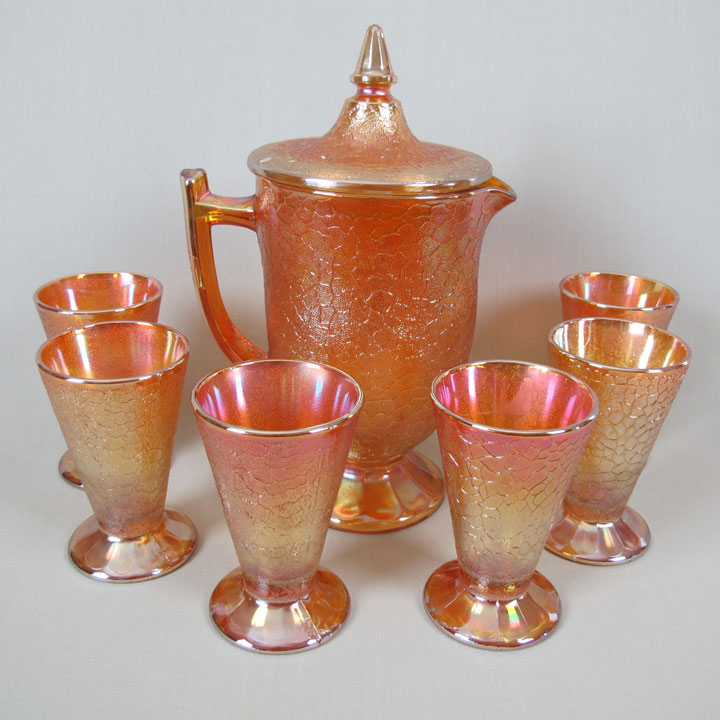
Crackle, Jeannette - Found in several shapes. See the link for more information.

Diamond Fountain - Higbee - These little marigold cruets are quite rare and quite desirable. Some have different stoppers.

Diamond Point Columns - Hazel Atlas - Pattern that has alternating vertical strips of tiny diamonds and plain panels. Found in a small range of shapes including large and small bowls, plates, and table set pieces always in marigold.
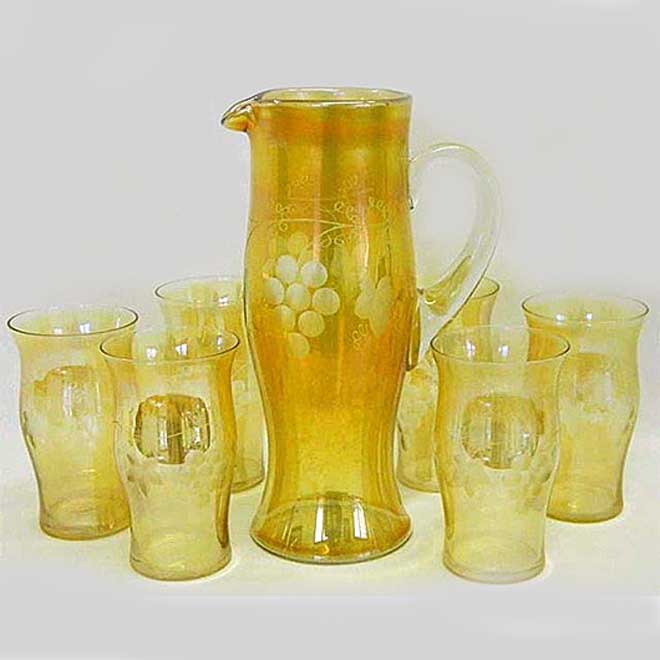
Engraved Grape - The pattern is etched into the glass. Possibly an Imperial piece.
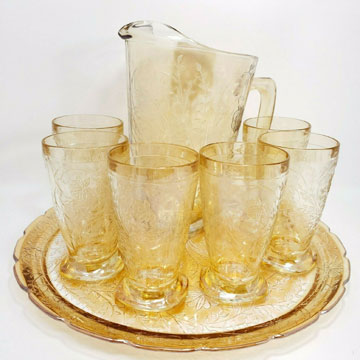
Floragold - Jeannette Glass - Jeannette made Floragold in a host of shapes making up an entire table setting. Pieces may have been sold at supermarkets for points. The pattern is an etching of vines and flowers on the surface of the glass.
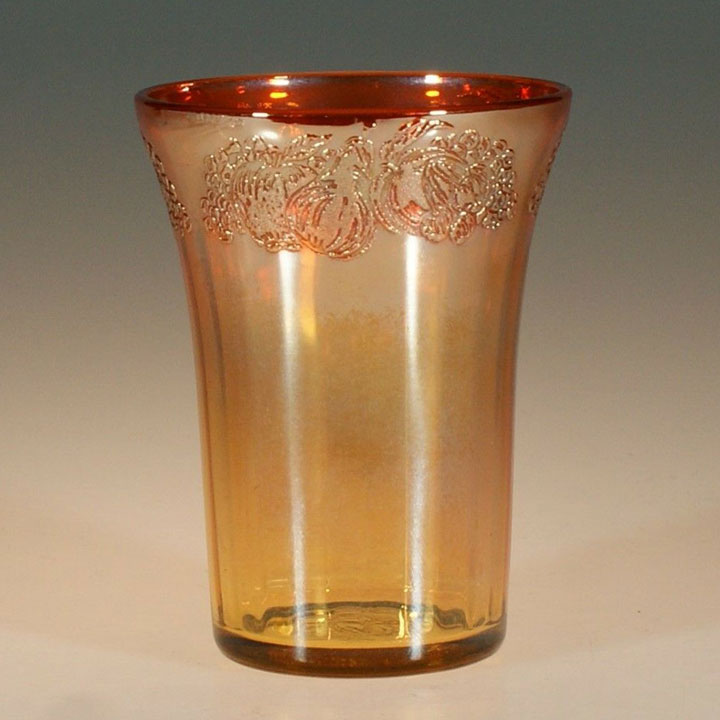
Fruit Lustre - Federal Glass - A tumbler in marigold with a simple fruit band around the top.

Golden Flowers and Stippled - Jenkins - These two Jenkins vases are found only in marigold. Seven-and-a-half inches tall and similar to Jenkins' Stork vase.
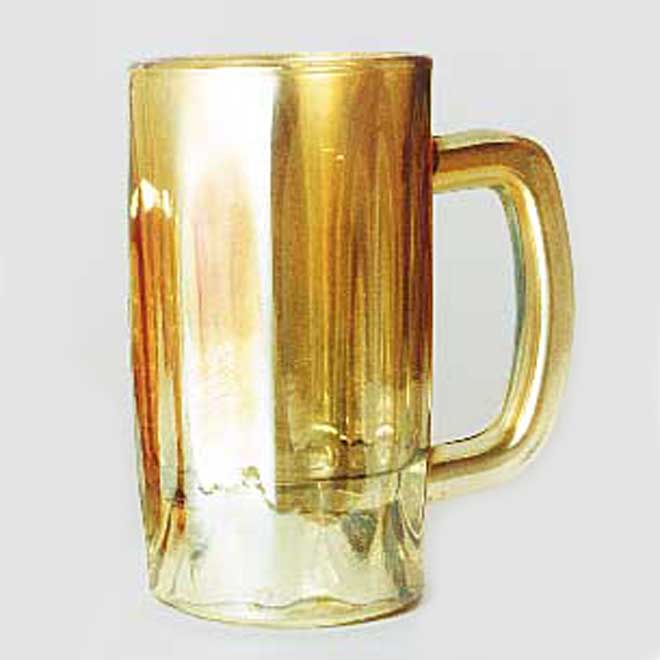
Golden Oxen Mug - These marigold iridized mugs are 5 1/2-inches tall.

Golden Wedding - Best known of the various Carnival whiskey bottles, Golden Wedding is found in five sizes: nip (1/10th pint), 1/2 pint, pint, quart, and two quart. Either made before 1920 or after 1933 as that is when Prohibition occurred.
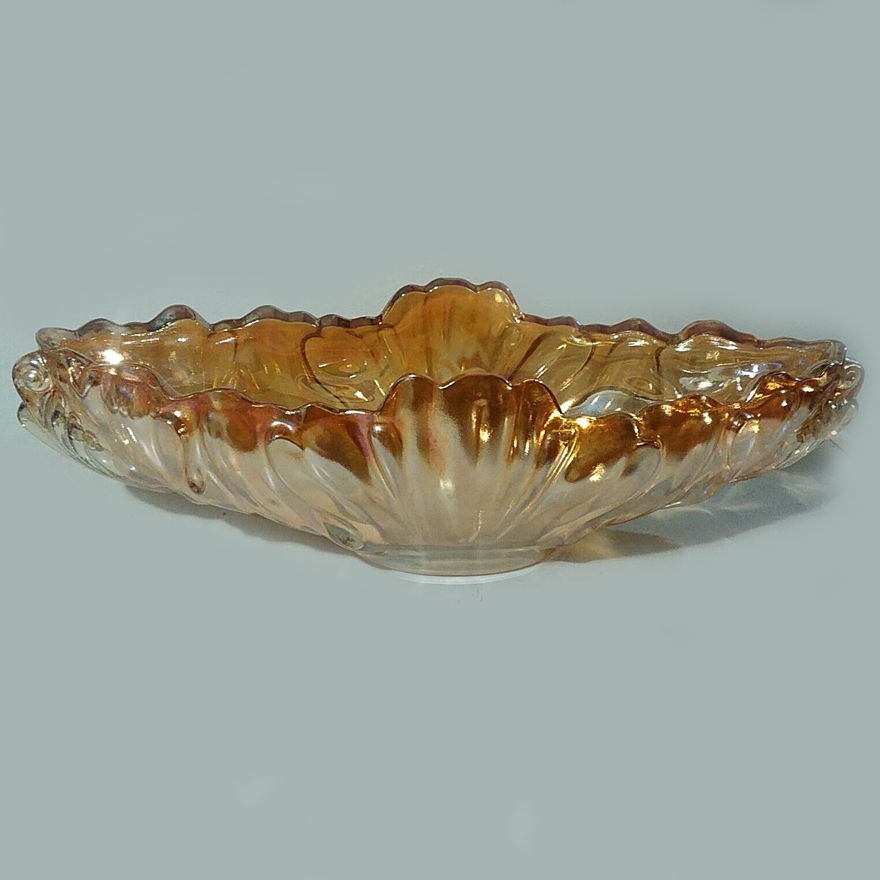
Gondola - Jeannette - This elongated bowl is over 15 inches long. Made by Jeannette probably up into the 1960s.
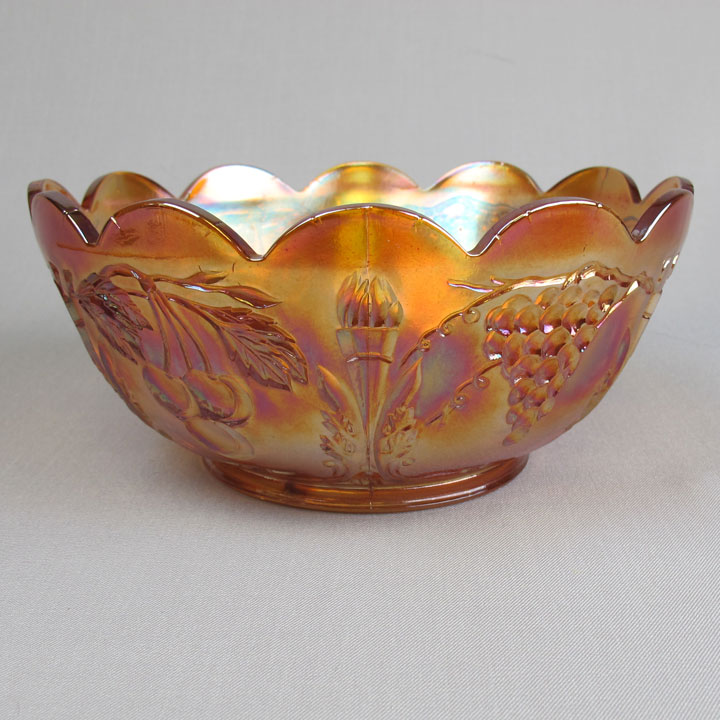
Grape and Cherry - This is an intaglio design with the grapes and cherries cut into the exterior. The interior is plain. This marigold (its only color) example is about 8 inches wide.

Heart Band - McKee - Heart Band is so named because of the inverted heart shapes around the bottom of the pieces. Apparently popular as souvenir pieces as so many have etched or hand-lettered location names. Found in a creamer, mugs and tumblers in green or marigold.
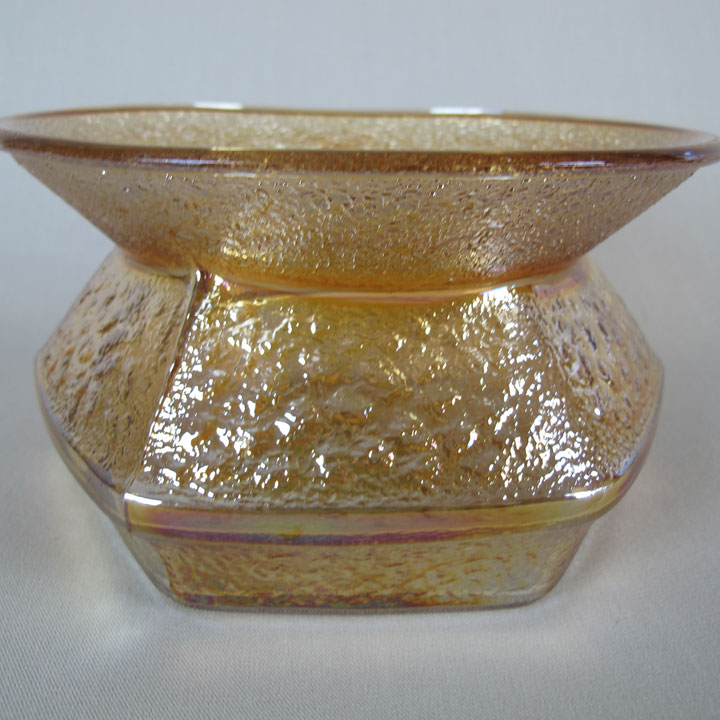
Hobnail Soda Gold - These large spittoons are often listed as Crackle but the pattern is different. Found in lime green or marigold.
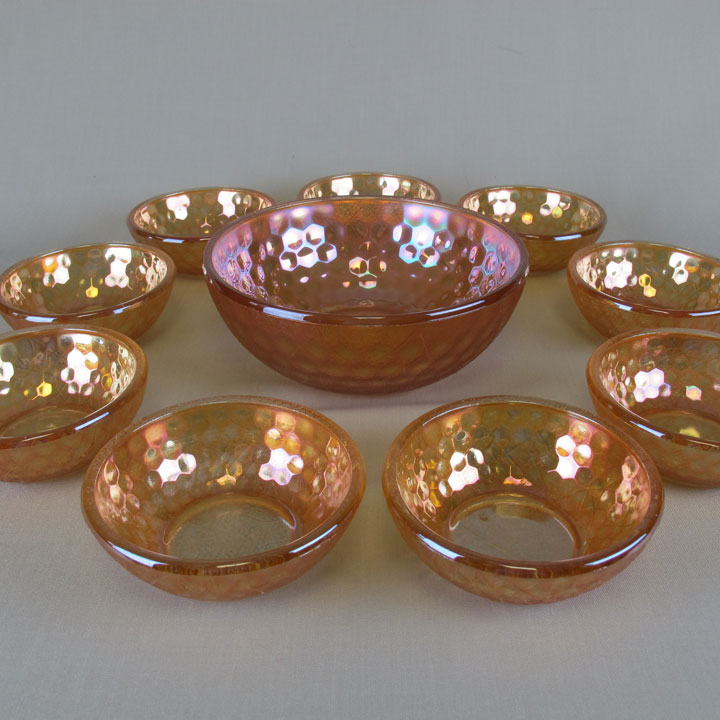
Honeycomb and Crackle - These bowls have both a honeycomb pattern on the inside and a crackle pattern on the outside.

Interior Honeycomb - The honeycomb pattern is on the inside. Handles are solid wedge of glass with a flat top. Found in marigold in a creamer and suger.
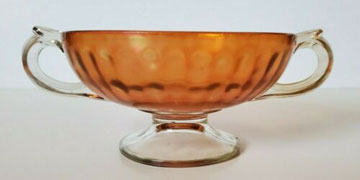

Interior Rays - Interior Rays has a plain exterior and vertical rays on the interior. Made in several shapes. Handles have a thumbrest.
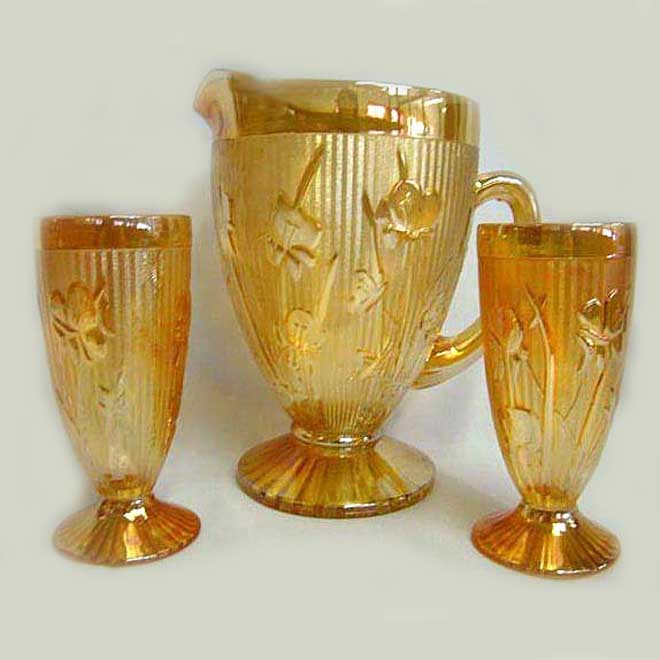
Iris and Herringbone, Jeannette - Found in a range of shapes including water sets, plates and bowls typically in marigold. Tea cups and saucers can be found in some rare colors such as blue and wisteria.

Lattice #336, Jenkins - A spooner found by Carl and Eunice Booker. In marigold, it has 10 panels of diamonds around the tumbler and a 24-rayed star in the base with alternating long and short rays. It is 3 3/4-inches tall. Could be confused with a tumbler, though those are slightly taller.
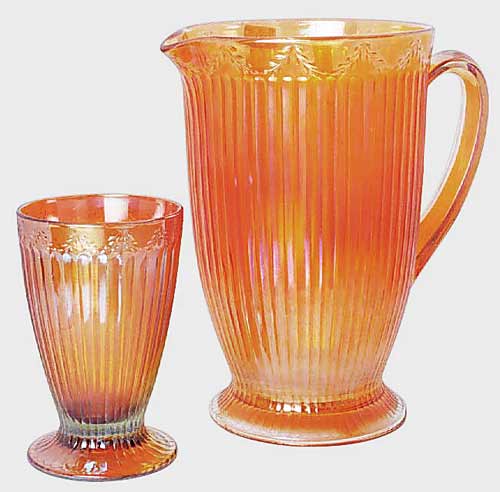
Laurel Band - Mostly found in marigold, some tumblers appear to have aqua coloring at the neck of the base.
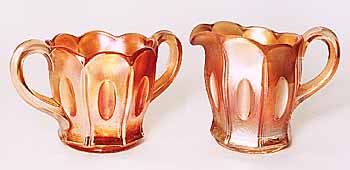
Long Thumbprint - Dugan - A simple pattern with indented ovals on panels. Not much in demand. Marigold breakfast sets (small creamer and sugar) are the only shape.
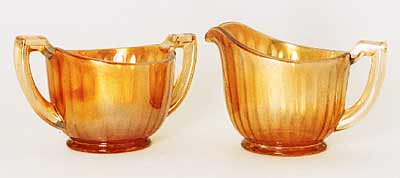
Lustre and Clear - Imperial - This little creamer and sugar are the usual shapes seen in the pattern. It's a fluted pattern with flat top handles. In addition to the above pieces, plates, relish dishes and a fewer other shapes are known. Almost always found in marigold but amethyst and green are reported.
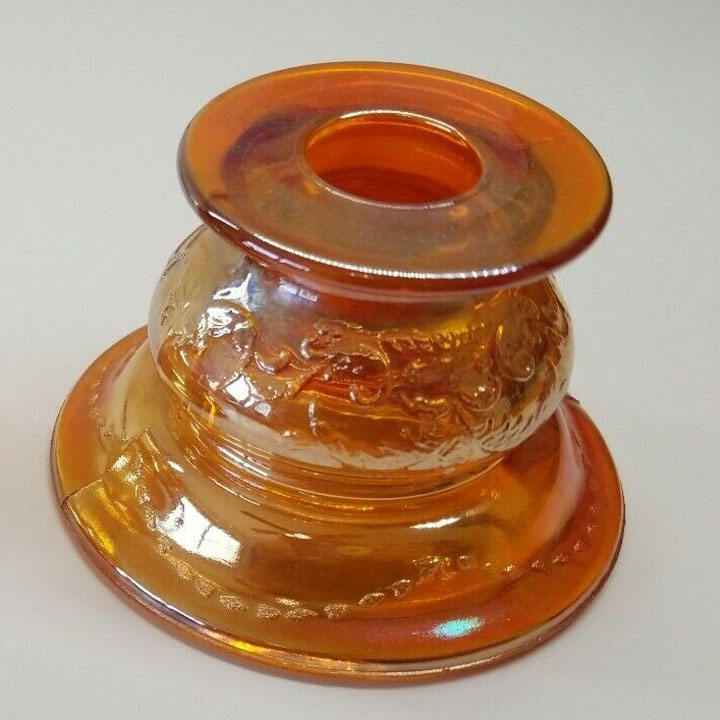
Madrid, Federal Glass - Madrid was a pattern made extensively in depression glass. In carnival glass, Madrid is found in bowls, platters and this candlestick. Floral and scroll work with a beaded swag.
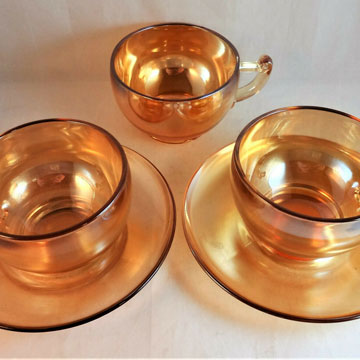
Moderne, - Moderne is named for its simple modern design. Found mostly in cups and saucers but also known in small bowls and punch bowls with the words "Egg Nog" on the side.
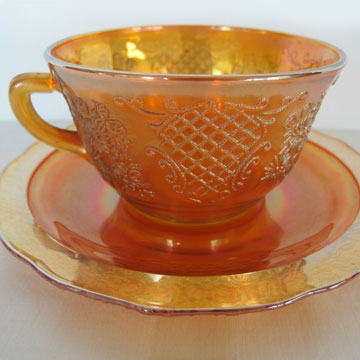
Normandie - A table set that comes in a host of shapes including divided plates, bowls and tea cups. The pattern is more of an etching on the exterior. Also called Bouquet and Lattice. Only found in marigold.

Optic Rays - Found in covered pieces with a distinctive finial top. The pattern of vertical rays or panels is on the interior.
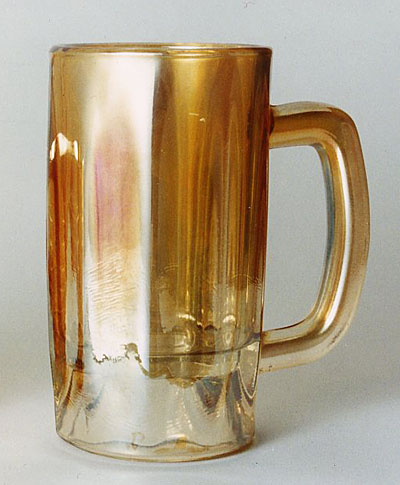
Oxbow Mug - A large marigold beer mug.
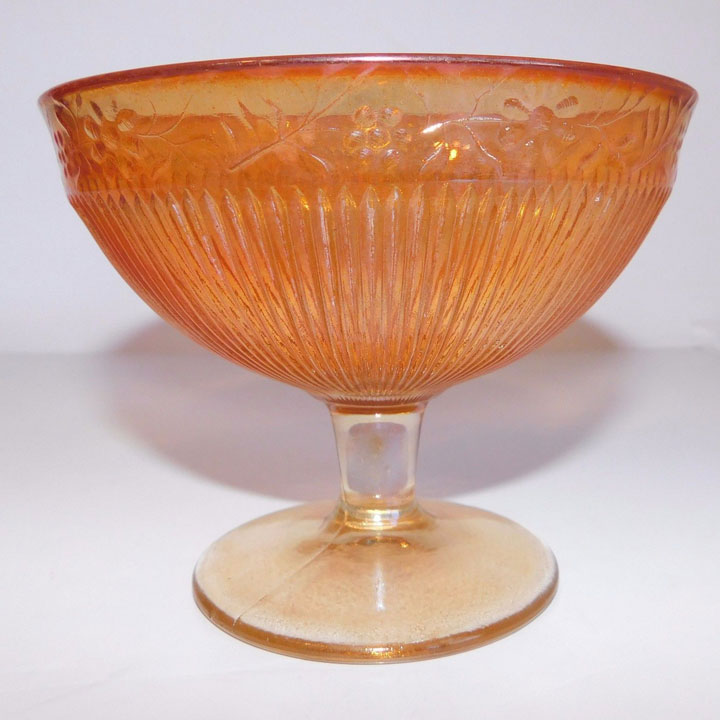
Prism and Daisy Band - This late depression era sherbert in marigold has bands of daisies around the top. Also found in large and small bowls and a vase.
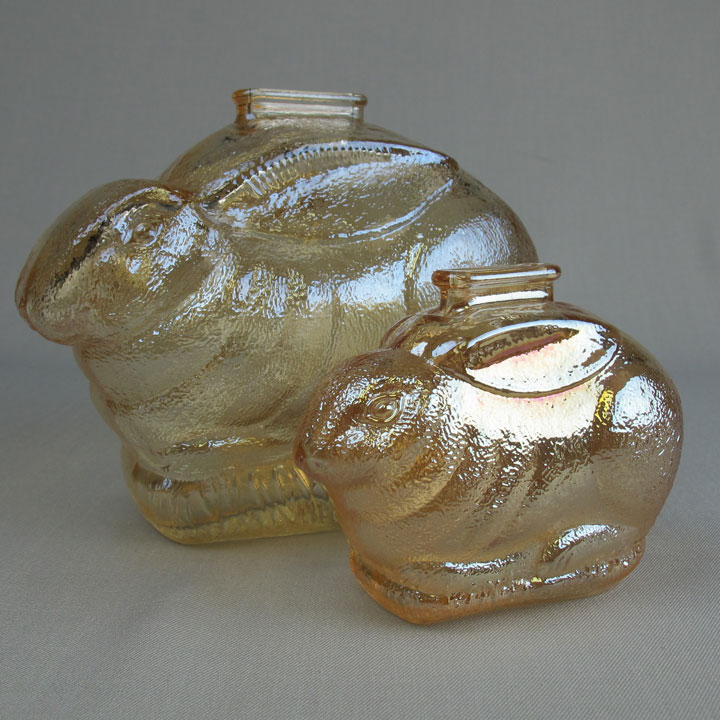
Rabbit Banks - Rabbit banks are quite rare. There are two sizes, one about 7 inches long, one 4 1/2 inches. May be from Jenkins or Anchor Hocking and production may have continued into the 1950's.
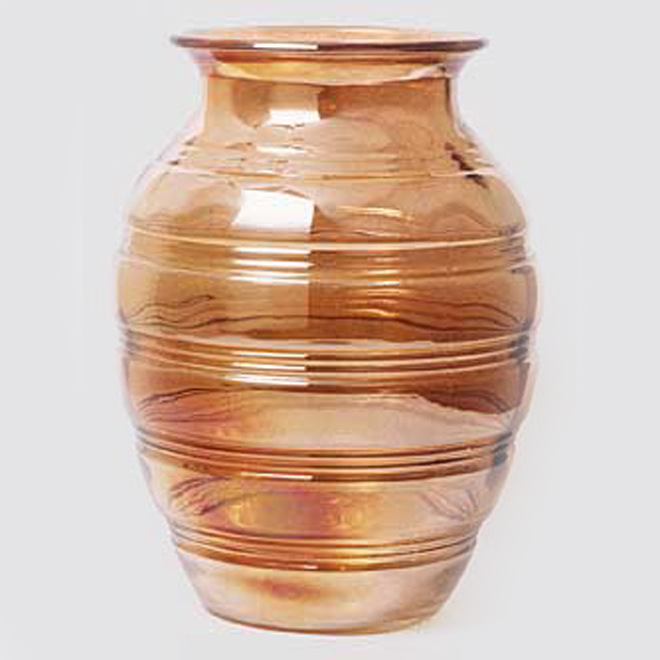
Rings Vase - Found in this 7 inch tall vase as well as a very rare covered jar.

Stork ABC Bowl - This pattern, with a flying stork in the center and the alphabet and numbers around it, are found in a child's bowl and plate. The plate is known in a variant that has palm trees in the base. Usually attributed to Westmoreland. Only seen in marigold.

Stork Vase, Jenkins - These 7 1/2-inch tall vases usually have just so-so iridescence and only in marigold. The stork is on one side and the back of the vase is just stippled.
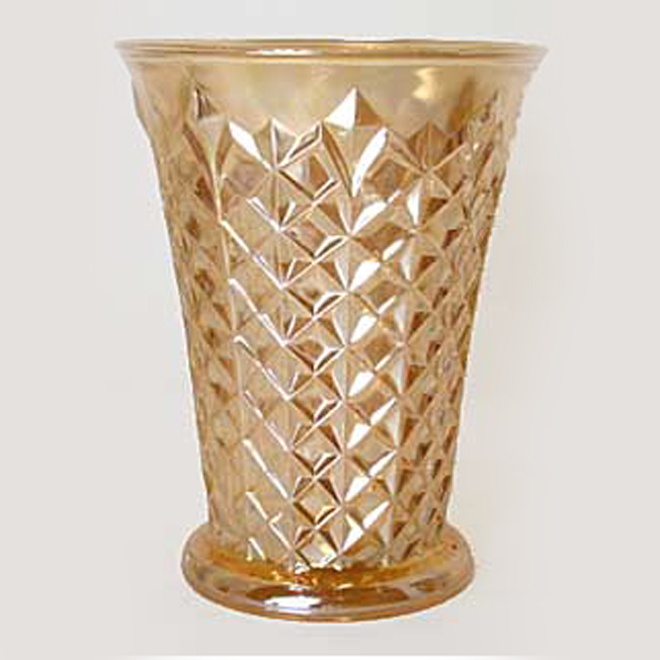
Studs, Jeannette - Based on a listing in the Weatherman book, this is Jeannette's #3621. They are 7 inches tall and have a swirled star base. Probably made between the 1940s and 1960s.
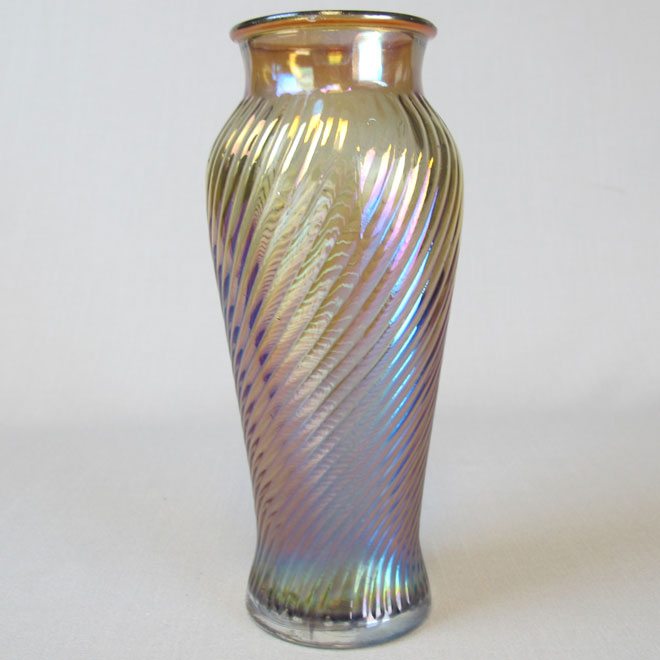
Swirl - Imperial - This vase is made by Imperial. Found in marigold and smoke.
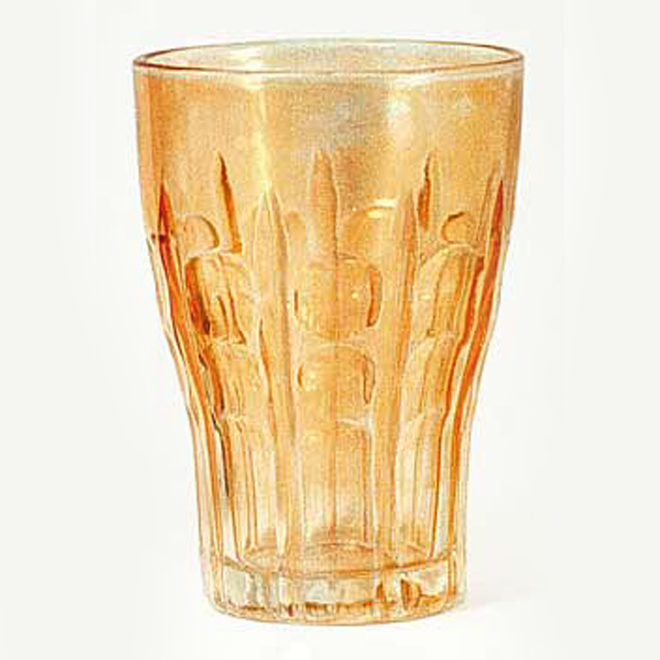
Sword and Circle - Anchor Hocking - This tumbler has nine panels divided by vertical indentions (swords), and indented circles. The tumblers are 4 3/8 inches tall, juice glasses 3 1/2 inches tall. Carnival Glass collectors have come to know this pattern as Sword and Circle, but the original name was High Point and was made by Anchor Hocking, probably during the 1940s-60s.
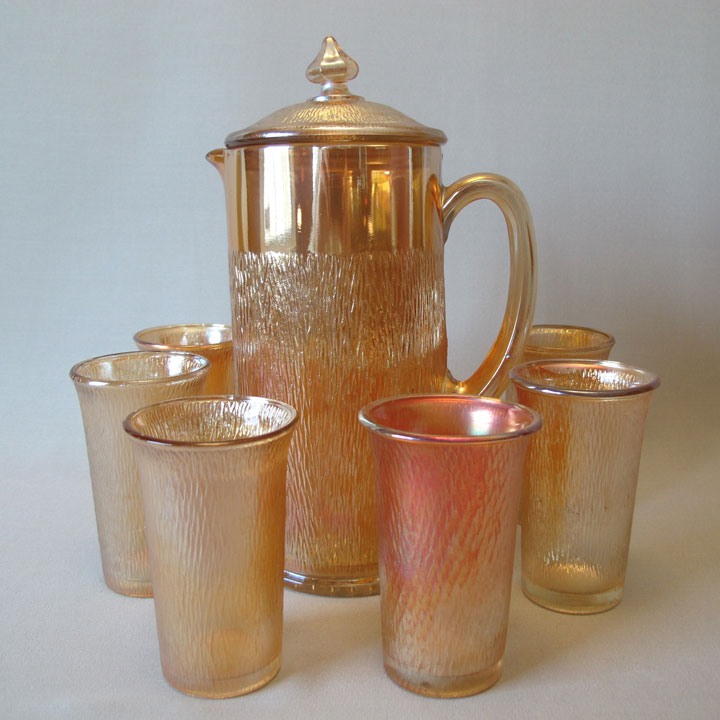
Tree Bark - Jeannette - Tree Bark is a depression era pattern found only in marigold. Sometimes credited to Jeannette, sometimes to Imperial. Found in several shapes including bowls, candlesticks and vases.
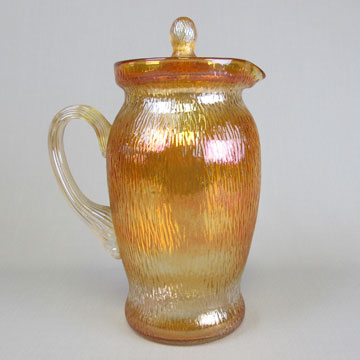
Tree Bark - Jeannette - This Tree Bark pitcher has the same pattern as the standard Tree Bark but is much harder to find. This pitcher has an applied handle.

Tree of Life - Easily confused with an Imperial pattern called Soda Gold or a Jeannette pattern called Crackle. Soda Gold and Crackle, however, have a stippled background between the meandering lines while Tree of Life does not. Usually seen in a 6-inch tall marigold basket or occasionally in marigold water sets.
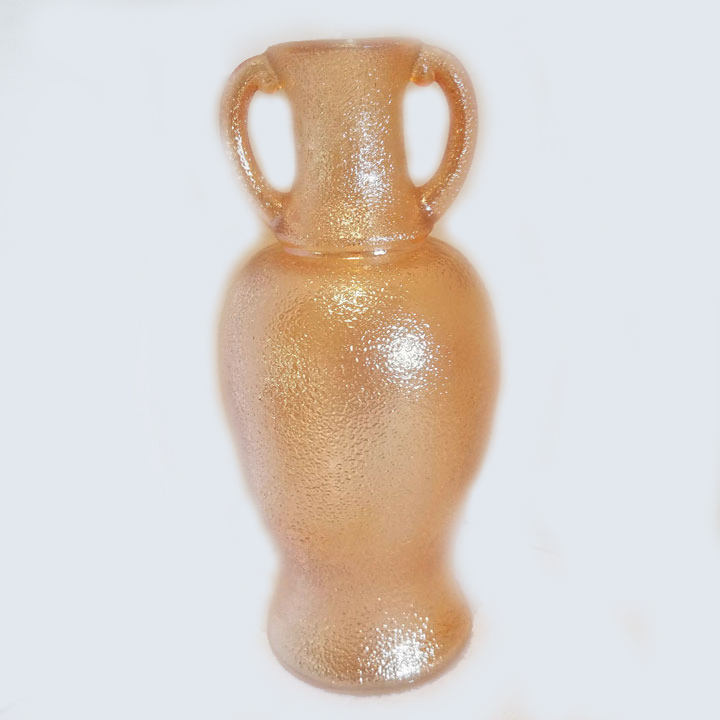
Urn Vase, Jeannette - Typical urn shape with all over stippling.
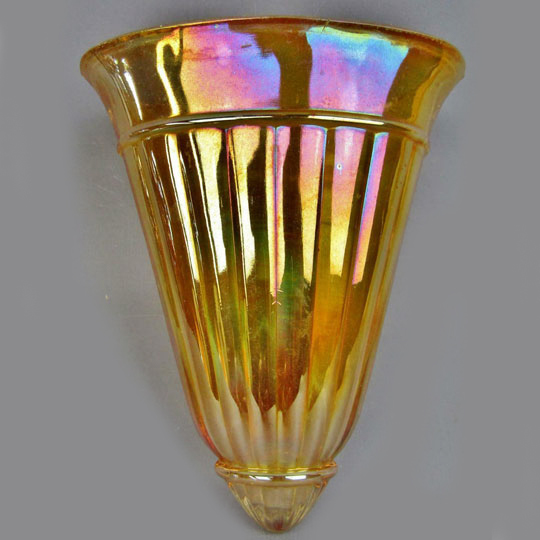
Wall Vase - This six inch tall vase has a hole in the top back so that it may be hung on a wall. The pattern is of ribs on the front.

